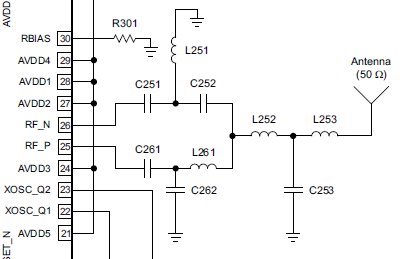On page 24 of the CC2540 datasheet, it suggests the following circuit to connect to a 50-ohm unbalanced antenna:
- What should the antenna impedance be looking into the T-network to the left of L252 when there's a 50 ohm load on the other side of the T-network?
- Is there any way I can tweak the differential impedance seen at the differential RF port on the module (pins 25 and 26)? Or should I just use the recommended components and layout and assume if my impedance at the right side of the T-network is 50 ohm then the differential impedance at the RF port is correct (correct = 70 - j30)?
Thanks!! CJ



